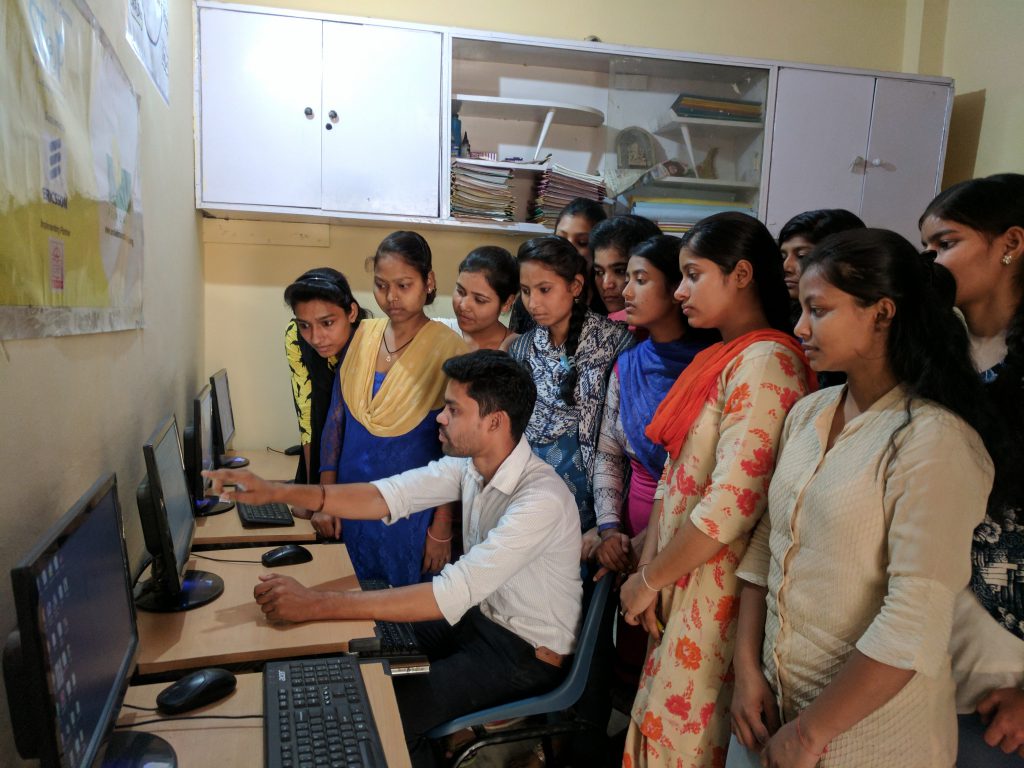Investment in humans leads to better quality of living through a boost in economy, hopefully making the country a better one to live in. A well-educated population is more likely to produce and embrace technological advancements maintaining a competitive edge globally.
Gone are the days of rote memorisation and passive learning. The digital era means interactive learning reigns supreme. Digital tools and platforms have become the new playgrounds for knowledge, offering hands-on experiences that bring STEM concepts to life. Virtual simulations and educational games are not just add-ons- they make learning more engaging and impactful.
Technology adding wings to STEM education
STEM education provides students with innovative tools and methods that make learning more interactive, engaging and personalised. Technology enriches STEM education by making it more accessible, engaging, and tailored to individual learning needs. It encourages students to become active participants in their education, preparing them for the challenges of the future workforce. Here are a few ways in which technology is transforming the STEM educational landscape-
· Access to a Vast Repository of Knowledge:
The internet- the democratized space to access information. Students can now tap into a global repository of knowledge, ranging from scientific journals to educational videos. This unprecedented access ensures that learners from every corner of India can explore the depths of STEM without the constraints of geography or socio-economic status.
· Real-time Collaboration and Connectivity:
Collaboration is the lifeblood of STEM, and technology has removed the roadblocks of distance and time. Real-time collaboration tools enable students to work together on projects, exchange ideas and solve problems collectively.
· Personalised Learning Journeys:
The one-size-fits-all approach to education is becoming obsolete. Adaptive learning technologies are tailoring educational experiences to meet individual needs based on their strengths and weaknesses. By analysing data on students’ performance, these platforms can customise lessons, ensuring that every learner’s potential is maximised and no one is left behind.
· Harnessing the Power of Visualisations:
Visualisations transform abstract STEM concepts into tangible experiences. Interactive graphs, 3D models and virtual experiments allow students to visualiSe theories, enhancing understanding and retention. With technology, students can also embark on virtual field trips to distant or inaccessible locations, such as space stations, deep-sea environments or historical sites relevant to STEM learning.
· Interactive Simulations and Labs:
Technology enables the creation of virtual simulations and labs, allowing students to conduct experiments and explore scientific concepts in a safe and controlled environment. This hands-on approach helps in deepening their understanding of complex STEM subjects.
· Gamification for Interactive Learning:
Gamification is turning education into an adventure. Complex STEM concepts become interactive challenges that stimulate critical thinking and problem-solving skills by incorporating game elements into learning. This approach not only makes learning fun but also prepares students for real-world applications of their knowledge.
· Using Artificial Intelligence:
AI technologies in STEM education can support personalised learning, automate assessments and provide intelligent tutoring. AI can analyse large sets of educational data to identify trends and insights, helping educators tailor their teaching strategies.
Collective efforts are necessary
Implementing technology in STEM education comes with several challenges that need to be addressed to ensure effective integration and utilisation. Challenges such as
- limited access to resources and budget constraints,
- inadequate teacher training and their resistance to adaptability,
- infrastructural development of classroom environment to facilitate technology-based learning, and
- accessibility of technology to all students.
However, with concerted efforts of all the stakeholders, government, schools, educators and students we can successfully integrate technology into STEM education through strategic planning and investment.
The Indian government has also launched several successful projects to integrate technology into STEM education, aiming to create a tech-savvy and innovative nation. Projects like Atal Tinkering Labs (ATL), The DIKSHA platform as a national e-learning portal, reforms under NEP 2020 and the Digital India campaign that promotes digital literacy and supports the development of digital infrastructure and the creation of a digital ecosystem.
These projects reflect the government’s commitment to enhancing the quality of STEM education through technology, ensuring that students are well-prepared for the demands of the future workforce.
What are development organisations doing about STEM education?
Development organisations like Smile Foundation take their initiatives to the remotest locations through collaborative efforts of partners, government, schools, etc. We are actively involved in integrating technology into STEM education in schools across India.
It focuses on STEM-focused and tech-driven teacher training programmes to empower educators with the skills required to incorporate technology into their teaching methods. It conducts hands-on workshops and interactive sessions to incorporate innovative learning methods. Further to integrate technology and enhance the STEM learning experiences it also encourages students towards project-based learning through collaborations with models such as 3-D printing, Aero-modelling, Energy (Solar Lamp making), robotics, astronomy, etc.
Smile conducts pilot projects that focus on integrating relevant technological applications in education, especially in remote and underserved locations. It has also collaborated with IIT Bombay to make learning fun and fostering scientific intelligence from early school days. Through these efforts, Smile Foundation is contributing significantly to the enhancement of STEM education in India. With the integration of technology, these initiatives equip students with the necessary skills for the future.
Technology- a catalyst for innovations in STEM Education in India
With the integration of technology into STEM education learning is aligned with the demands of the modern workforce that enhances employability and equips students for a wide array of sectors and careers. It also acts as a catalyst for innovations as it encourages students to think beyond textbooks, fostering a culture of creativity and exploration.
The journey has begun, and there’s no looking back.









